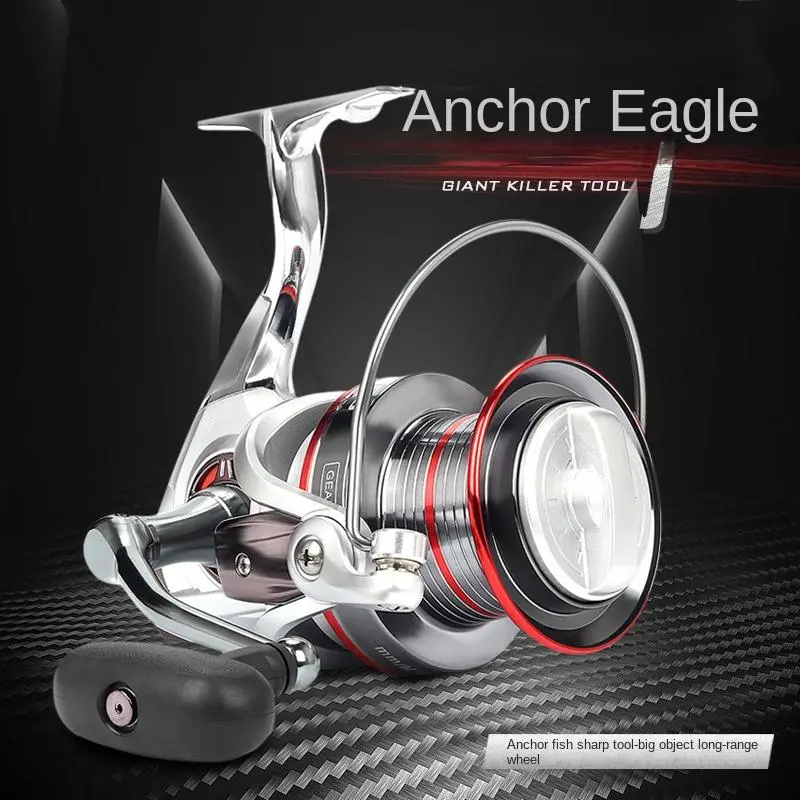The Ultimate Guide to Fishing Spinning Reels: Everything You Need to Know
2024-08-04
Fishing is more than just a pastime; it’s an art form that combines skill, patience, and the right equipment. Among the various tools available to anglers, the spinning reel stands out as one of the most versatile and user-friendly options. Whether you’re a seasoned pro or a beginner, understanding the features and benefits of fishing spinning reels can enhance your fishing experience and help you land that big catch. In this blog, we’ll delve into the essentials of spinning reels, from their design and features to their advantages and ideal uses.
What is a Fishing Spinning Reel?
A fishing spinning reel is a type of reel mounted underneath the rod that features a fixed spool. It is known for its simplicity and ease of use, making it a popular choice among anglers of all skill levels. The spinning reel operates by using a bail system to wrap the fishing line around the spool as it is retrieved. This design allows for smooth, long casts and reliable line management.
Key Features of Fishing Spinning Reels
1. Spool: The spool of a spinning reel is fixed in place and rotates as the handle is turned. It is usually made from aluminum, graphite, or composite materials, offering different balances of weight and durability. The spool’s size and capacity determine how much line it can hold and the reel’s overall performance.
2. Bail System: The bail system is a metal arm that flips open to allow the fishing line to unwind and flips back to catch the line during retrieval. This mechanism ensures smooth line management and prevents tangles.
3. Drag System: The drag system controls the amount of resistance the fish feels when pulling on the line. It is adjustable, allowing anglers to set the drag to match the size of the fish and the line’s strength. A smooth and reliable drag system is crucial for successful fishing.
4. Gear Ratio: The gear ratio of a spinning reel refers to how many times the spool turns for each turn of the handle. A higher gear ratio means faster retrieval, which is ideal for certain fishing techniques, while a lower gear ratio provides more power for pulling in larger fish.
5. Handle: The handle of a spinning reel is typically located on the side of the reel and is used to retrieve the line. It can be made from various materials and is designed for comfort and ergonomic use. Some reels feature interchangeable handles to suit different preferences.
6. Anti-Reverse Mechanism: This feature prevents the handle from turning backward, ensuring that the reel’s drag system functions correctly and that there is no slippage when fighting a fish.
7. Ball Bearings: Ball bearings in a spinning reel reduce friction and ensure smooth operation. The number and quality of ball bearings can affect the reel’s performance and durability.
Benefits of Fishing Spinning Reels
1. Ease of Use: Spinning reels are known for their user-friendly design, making them accessible for beginners. The open-face design and easy casting mechanism simplify the learning process and improve accuracy.
2. Versatility: Spinning reels can handle a wide range of fishing techniques and species. They are suitable for both freshwater and saltwater fishing and can be used with various types of baits and lures.
3. Long Casting Distance: The design of spinning reels allows for longer and more accurate casts. The fixed spool and smooth line management contribute to reduced line tangles and improved casting performance.
4. Lightweight Design: Many spinning reels are designed to be lightweight, reducing fatigue during long fishing trips. This is particularly beneficial for anglers who need to cast repeatedly or fish for extended periods.
5. Smooth Operation: The ball bearing system in spinning reels ensures smooth operation and consistent performance. This helps in maintaining control over the line and improving the overall fishing experience.
6. Affordable Options: Spinning reels come in a range of price points, from budget-friendly models to high-end options. This makes it easy for anglers to find a reel that fits their needs and budget.
Choosing the Right Spinning Reel
When selecting a spinning reel, consider the following factors to find the best match for your fishing style and needs:
1. Fishing Type: Determine the type of fishing you plan to do (e.g., freshwater or saltwater, fly fishing or bass fishing) and choose a reel designed for that purpose.
2. Reel Size: Select a reel size based on the type of fish you are targeting and the line capacity you need. Larger reels are suitable for bigger fish and heavier lines, while smaller reels are better for lighter tackle.
3. Gear Ratio: Choose a gear ratio that matches your fishing technique. A higher ratio is ideal for fast retrieval, while a lower ratio provides more power for battling larger fish.
4. Drag System: Look for a reel with a reliable and adjustable drag system. This allows you to fine-tune the drag pressure to suit different fishing conditions.
5. Budget: Consider your budget and choose a reel that offers the best value for your money. While higher-priced reels often have advanced features, there are many affordable options that perform well.
Applications of Fishing Spinning Reels
1. Freshwater Fishing: Spinning reels are commonly used for freshwater fishing in lakes, rivers, and ponds. They are effective for catching species such as bass, trout, and panfish.
2. Saltwater Fishing: For saltwater fishing, spinning reels are designed to withstand the corrosive effects of saltwater. They are suitable for targeting species like snapper, sea bass, and surf fish.
3. Fly Fishing: While traditional fly fishing typically uses fly reels, spinning reels can also be used for certain fly fishing techniques, particularly when targeting smaller species.
4. Casting Lures and Baits: Spinning reels are ideal for casting a wide variety of lures and baits, making them versatile tools for different fishing scenarios.
Conclusion
Fishing spinning reels are an essential tool for any angler, offering a blend of ease of use, versatility, and performance. Their design and features cater to a wide range of fishing techniques and environments, making them suitable for both beginners and experienced anglers.
By understanding the key features, benefits, and applications of spinning reels, you can make an informed decision when choosing the right reel for your fishing needs. With the right spinning reel in hand, you’ll be well-equipped to enhance your fishing experience and increase your chances of landing that prized catch.



